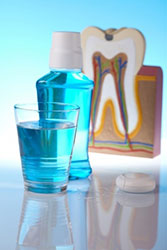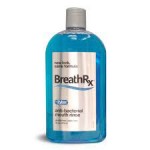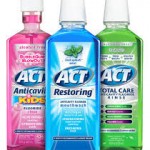What To Look For In A Mouthwash
October 10th, 2013
 If you're looking for that extra step in oral hygiene to help kill bacteria and freshen breath, look no further than mouthwash. There are three leading types of mouthwash that all serve different purposes depending on your needs. Here's a helpful guide to educate you on what you should look for in a mouthwash and why.
If you're looking for that extra step in oral hygiene to help kill bacteria and freshen breath, look no further than mouthwash. There are three leading types of mouthwash that all serve different purposes depending on your needs. Here's a helpful guide to educate you on what you should look for in a mouthwash and why.
Mouthwashes are a great tool for proper oral hygiene, however, cannot replace brushing and flossing which are essential to teeth care. While mouthwash can help both free the mouth of food particles and kill bacteria, it does not have the same strength and brushing and flossing. That is because mouthwash does not have the abrasive scrubbing power of either a toothbrush or floss.
Mouthwash works by a round of bacteria-fighting chemicals, usually different depending on the brand of mouthwash. However, the main ingredient for a successful mouthwash comes from a chlorhexidine compound, which helps prevent plaque build up. Mouthwashes before chlorhexidine did not stay long enough in the mouth to do any successful fighting of plaque and bacteria. In the 1960s, though, it was discovered that chlorhexidine was able to adhere to the teeth and help fight plaque for many hours. Since then, a range of commercial brands have released their version of the mouthwash, all with a chlorhexidine compound.
There are three main types of mouthwash which each serve slightly different functions, while all still helping fight plaque.
The first type of mouthwash is the Antibacterial mouthwash. These types of mouthwashes are helpful in fighting gum disease, gingivitis, plaque, along with reducing the bacteria count by 75 percent. Antibacterial formulas are typically high in alcohol content and can often come with a small burning sensation when used. With a strong flavor, many find antibacterial mouthwashes slightly uncomfortable, but highly effective. If the alcohol in mouthwash is a nuisance to a consumer, however, there are several alcohol-free versions of the same brands you can try.
 The next type of mouthwash is a Breath-Freshening mouthwash. The kinds of mouthwashes are typically made with a much lower alcohol content than the antibacterial mouthwashes. Rather, these mouthwashes have higher counts of chlorine or zinc which are helpful in defusing the sulphur compounds which are the leading cause of bad breath. While, these kinds of mouthwashes do have a stronger focus on breath, they still have the ability to fight bacteria. The compound cetylpyridinium is often present in many of these mouthwashes, which helps fight bacteria and plaque.
The next type of mouthwash is a Breath-Freshening mouthwash. The kinds of mouthwashes are typically made with a much lower alcohol content than the antibacterial mouthwashes. Rather, these mouthwashes have higher counts of chlorine or zinc which are helpful in defusing the sulphur compounds which are the leading cause of bad breath. While, these kinds of mouthwashes do have a stronger focus on breath, they still have the ability to fight bacteria. The compound cetylpyridinium is often present in many of these mouthwashes, which helps fight bacteria and plaque.
 The last type of mouthwash is a Fluoride-Based rinse. These mouthwashes are very specific to anti-cavity and prevention. Fluoride is known to help protect and strengthen tooth enamel, which in turn protect the teeth from harmful decay. While many mouthwashes can contain fluoride, there are specific mouthwashes that have a much higher content of fluoride then any other anti-bacterial compound. With these kinds of mouthwashes, the user must be very strict with the directions. Fluoride must remain on the teeth for over a half hour to successfully work. If you use a fluoride-based mouthwash, make sure to not rinse, drink water, or eat for thirty minutes after use.
The last type of mouthwash is a Fluoride-Based rinse. These mouthwashes are very specific to anti-cavity and prevention. Fluoride is known to help protect and strengthen tooth enamel, which in turn protect the teeth from harmful decay. While many mouthwashes can contain fluoride, there are specific mouthwashes that have a much higher content of fluoride then any other anti-bacterial compound. With these kinds of mouthwashes, the user must be very strict with the directions. Fluoride must remain on the teeth for over a half hour to successfully work. If you use a fluoride-based mouthwash, make sure to not rinse, drink water, or eat for thirty minutes after use.
There is a fourth kind of mouthwash, which is a teeth-whitening mouthwash, however, if you have read from previous articles, (LINK TO TEETH WHITENING), there are plenty of whitening methods that are much more effective and cost conscious.
It is always recommended to follow the directions on the back of your mouthwash bottle. Each kind of mouthwash, antibacterial, breath freshening, and fluoride, all have separate directions and uses. Be sure you're using your mouthwash correctly for the most effective outcome.
If you have questions about mouthwash or proper oral care, do no hesitate to contact Water Tower Dental and set up an appointment today to start on the path to perfect oral hygiene.






 Website Powered by Sesame 24-7™
Website Powered by Sesame 24-7™